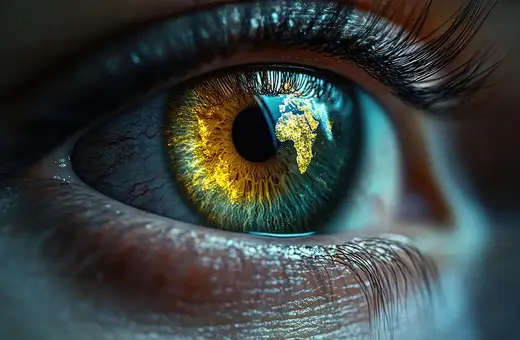How we know others has been a problem perplexing philosophers for centuries (exactly when the problem arises in the history of philosophy is a matter of some speculation). For as long as there has been a problem, there has also been an acknowledgement that the way in which we know others and the way we know ourselves is substantially different. One very early statement of the problem can be found in St. Augustine’s De Trinitate (written in the 4th century AD):
“Know thyself” is not said to the mind as…”know the will of that man”, for it is not within our reach to perceive at all, either by sense or understanding, unless by corporeal signs set forth…."
It should be remembered that when philosophers talk about knowing oneself and others they are not talking about having deep insight into character but are asking a rather more superficial question: how can I know what another is thinking or feeling? St Augustine points out that we cannot perceive the mind of another (using the will as an example of a mental state); what we perceive in the case of others are merely “corporeal signs” – i.e. bodily movements. Notice that Augustine must hold that the movement I observe has nothing of the mindful about it. For him, the movement signals something else - an “inner state” – that cannot be perceived. The same idea is to be found in the works of George Berkeley (in the 18th century), who writes:
"Hence it is plain, we do not see a man – if by man is meant that which lives, moves, perceives, and thinks as we do: but only such a certain collection of ideas, as directs us to think there is a distinct principle of thought and motion like unto ourselves, accompanying and represented by it."
Again, we find in Berkeley the idea that we perceive something – the other’s behavioural (which will no doubt include facial) movements – which direct us to think there resides in the other a principle of movement and thought which is like what we find in ourselves.
There appears to be agreement here that we cannot perceive another’s mind, and that we somehow work our way to knowledge of the other’s mind from the movement of their bodies. And there is also agreement here that there is a contrast between the way I know my own mind and the way in which I know the mind of another. St Augustine held that I know my own mind “for no reason than that it is present to itself”. And Berkeley held that I know my own mind “intuitively” or “immediately”; and he insisted that “I do not perceive it as I perceive a triangle, a colour, or a sound”. So, while I perceive neither my own mind nor the mind of another, I know the former immediately while I come to know the latter via an inference from what I do perceive (the other’s bodily movements). This way of thinking has been pervasive when thinking about knowledge of one’s own and another’s mind.















Join the conversation